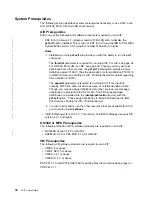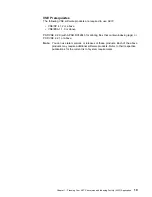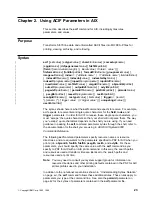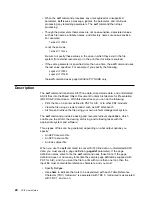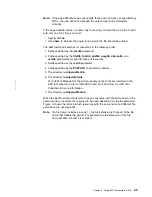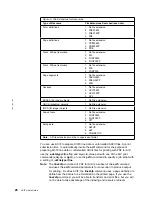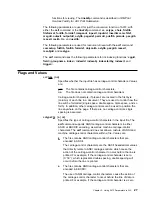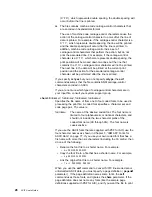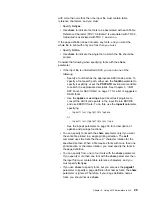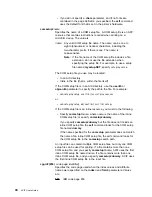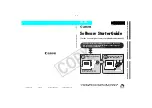
record
Specifies the relative record number from the indexing
anchor record. When ACIF is indexing the file, it uses
the information specified in the trigger
n parameters to
determine a page group boundary. When all of the
specified trigger
n values are true, ACIF defines the
indexing anchor record as the record where trigger1 is
located. trigger1 becomes the reference point from
which all indexing information is located. The supported
range of values for
record are
±
0 to 255.
column
Specifies the byte offset from the beginning of the
record. A value of 1 refers to the first byte in the record.
For files containing carriage-control characters, column 1
refers to the carriage-control. For those applications that
use a specific carriage-control character to define page
boundaries (for example, skip to channel 1), consider
defining the value of the carriage-control character as
one of the trigger
n parameters. The supported range of
values for
column are 1 to 32756. If the specified value
exceeds the physical length of the record, ACIF reports
an error condition and terminates processing.
length
Specifies the number of contiguous bytes (characters)
starting at
column that compose this field. The supported
range of values for
length are 1 to 250.
The field can extend outside the record length, as long
as the column where it begins lies within the record
length. In this case, ACIF adds padding blanks to fill out
the record. If the field begins outside the maximum
length of the record, ACIF reports an error condition and
terminates processing.
literal value | X
'
literal value
'
Specifies the literal (constant) value of the field
n
parameter. If the input data file contains unformatted
ASCII data, this value can be specified either as
character data or hexadecimal data. If the input data file
is
anything other than unformatted ASCII, the value must
be specified as hexadecimal data (otherwise, the
comparisons between the input file and what is coded in
the field
n parameter will not yield a match). The literal
value can be 1 to 250 bytes in length. ACIF does not
perform any validity checking on the actual content of
the supplied data.
For example, to specify five fields in your print job, you would enter:
field1=ð,2,2ð
field2=5,5,1ð
field3=
−
15,3ð,5
field4='444663821'
field5=X'ððð1'
In the preceding example, the fields have the following values:
32
ACIF User’s Guide
Summary of Contents for S544-5285-01
Page 1: ...IBM Print Services Facility IBM AFP Conversion and Indexing Facility User s Guide S544 5285 01...
Page 2: ......
Page 3: ...IBM Print Services Facility IBM AFP Conversion and Indexing Facility User s Guide S544 5285 01...
Page 10: ...viii ACIF User s Guide...
Page 22: ...2 ACIF User s Guide...
Page 40: ...20 ACIF User s Guide...
Page 41: ...Part 2 Using ACIF in the AIX Environment Copyright IBM Corp 1993 1999 21...
Page 42: ...22 ACIF User s Guide...
Page 72: ...52 ACIF User s Guide...
Page 96: ...76 ACIF User s Guide...
Page 99: ...Part 3 Using ACIF in the OS 390 MVS VM and VSE Environments Copyright IBM Corp 1993 1999 79...
Page 100: ...80 ACIF User s Guide...
Page 106: ...86 ACIF User s Guide...
Page 134: ...Figure 24 Example of a Customer s Phone Bill 114 ACIF User s Guide...
Page 142: ...122 ACIF User s Guide...
Page 196: ...176 ACIF User s Guide...
Page 197: ...Part 4 Appendixes Copyright IBM Corp 1993 1999 177...
Page 198: ...178 ACIF User s Guide...
Page 206: ...186 ACIF User s Guide...
Page 210: ...190 ACIF User s Guide...
Page 226: ...206 ACIF User s Guide...
Page 253: ......

